Research on Supply Chain Optimization Considering Consumer Subsidy Mechanism in the Context of Carbon Neutrality
Abstract
1. Introduction
2. Literature Review
3. Problem Description and Symbol Description
4. Analysis of Supply Chain Pricing Strategy Considering Consumer Subsidies
5. Example Analysis
5.1. The Impact of Carbon Emissions and Carbon Trading Prices on Supply Chain Profits
5.2. Influence of the Carbon Emission Coefficient on Supply Chain
6. Conclusions
- (1)
- Increasing the carbon trading price is beneficial for increasing corporate profits; however, with the increase in carbon emissions, corporate profits keep decreasing and the higher the carbon trading price, the more obvious the negative effect of carbon emissions on corporate profits.
- (2)
- An increase in government subsidies to consumers leads to a change in firms’ carbon emission reduction strategies, and when consumer subsidies increase, firms will reduce carbon emissions as much as possible to gain more profits due to higher levels of consumer low-carbon preferences.
- (3)
- When the price of carbon trading is higher, due to the higher opportunity cost of carbon trading, enterprises will reduce carbon emissions as much as possible to gain more profit.
- (1)
- For enterprises: When the enterprise carbon emission reduction factor is small, the enterprise carbon emission reduction cost is lower than the cost of purchasing carbon allowances; at this time, enterprises should reduce the carbon footprint in the production cycle as much as possible. When the carbon price is high, selling carbon allowances in the carbon trading market has a larger profit space; at this time, enterprises should also reduce carbon emissions as much as possible. When consumers’ awareness of low-carbon production gradually increases, enterprises should improve the level of carbon emission reduction and actively take the responsibility of social emission reduction in order to improve the brand image of enterprises and increase their profits.
- (2)
- For the government: The government can adjust the cost structure of enterprises by adjusting the subsidies to consumers to promote the implementation of carbon emission reduction by enterprises. In addition, it can also force enterprises to reduce carbon emissions by regulating carbon prices in the carbon trading market.
Author Contributions
Funding
Data Availability Statement
Conflicts of Interest
References
- Osieczko, K.; Zimon, D.; Placzek, E.; Prokopiuk, I. Factors that influence the expansion of electric delivery vehicles and trucks in EU countries. J. Environ. Manag. 2021, 296, 113177. [Google Scholar] [CrossRef] [PubMed]
- Jum’a, L.; Ikram, M.; Alkalha, Z.; Alaraj, M. Factors affecting managers’ intention to adopt green supply chain management practices: Evidence from manufacturing firms in Jordan. Environ. Sci. Pollut. Res. 2022, 29, 5605–5621. [Google Scholar] [CrossRef] [PubMed]
- Zimon, D.; Tyan, J.; Sroufe, R. Implementing sustainable supply chain management: Reactive, cooperative, and dynamic models. Sustainability 2019, 11, 7227. [Google Scholar] [CrossRef]
- Jharkharia, S.; Das, C. Vehicle routing analyses with integrated order picking and delivery problem under carbon cap and trade policy. Manag. Res. Rev. 2019, 43, 223–243. [Google Scholar] [CrossRef]
- Li, Z.; Yang, W.; Pan, Y. Carbon emission reduction cooperation in supply chain with government subsidies. Earth Environ. Sci. 2020, 647, 2145951. [Google Scholar] [CrossRef]
- Hu, X.; Yang, Z.; Sun, J.; Zhang, Y. Carbon tax or cap-and-trade: Which is more viable for Chinese remanufacturing industry? J. Clean. Prod. 2020, 243, 118606. [Google Scholar] [CrossRef]
- Shu, T.; Peng, Z.; Chen, S.; Wang, S.; Lai, K.K.; Yang, H. Government subsidy for remanufacturing or carbon tax rebate: Which is better for firms and a low-carbon economy. Sustainability 2017, 9, 156. [Google Scholar] [CrossRef]
- Yu, S.; Hou, Q. Supply chain investment in carbon emission-reducing technology based on stochasticity and low-carbon preferences. Complexity 2021, 2021, 8881605. [Google Scholar] [CrossRef]
- Liu, Z.; Zhang, S.; Li, L.; Hu, B.; Liu, R.; Zhao, Z.; Zhao, Y. Research on the construction and prediction of China’s national fitness development index system under social reform. Front. Public Health 2022, 783, 878515. [Google Scholar] [CrossRef]
- Ding, H.; Zhao, Q.; An, Z.; Tang, O. Collaborative mechanism of a sustainable supply chain with environmental constraints and carbon caps. Int. J. Prod. Econ. 2016, 181, 191–207. [Google Scholar] [CrossRef]
- Yin, Y.; Liu, F. Carbon Emission Reduction and Coordination Strategies for New Energy Vehicle Closed-Loop Supply Chain under the Carbon Trading Policy. Complexity 2021, 2021, 3720373. [Google Scholar] [CrossRef]
- Kang, K.; Zhao, Y.; Zhang, J.; Qiang, C. Evolutionary game theoretic analysis on low-carbon strategy for supply chain enterprises. J. Clean. Prod. 2019, 230, 981–994. [Google Scholar] [CrossRef]
- Wang, W.; Zhang, Y.J. Does China’s carbon emissions trading scheme affect the market power of high-carbon enterprises? Energy Econ. 2022, 108, 105906. [Google Scholar] [CrossRef]
- Ren, C. Carbon Emissions Trading Market Mechanism Design: Perspectives of Legal Economics. In Proceedings of the 2021 International Conference on Social Development and Media Communication (SDMC 2021), Sanya, China, 26–28 November 2021; Atlantis Press: Amsterdam, The Netherlands, 2022; pp. 1204–1212. [Google Scholar]
- Xiong, L.; Shen, B.; Qi, S.; Price, L.; Ye, B. The allowance mechanism of China’s carbon trading pilots: A comparative analysis with schemes in EU and California. Appl. Energy 2017, 185, 1849–1859. [Google Scholar] [CrossRef]
- Kundu, T.; Sheu, J.B. Analyzing the effect of government subsidy on shippers’ mode switching behavior in the Belt and Road strategic context. Transp. Res. Part E Logist. Transp. Rev. 2019, 129, 175–202. [Google Scholar] [CrossRef]
- Liu, Z.; Lang, L.; Li, L.; Zhao, Y.; Shi, L. Evolutionary game analysis on the recycling strategy of household medical device enterprises under government dynamic rewards and punishments. Math. Biosci. Eng. 2021, 18, 6434–6451. [Google Scholar]
- Ma, C.; Yang, H.G.; Zhang, W.P.; Huang, S. Low-carbon consumption with government subsidy under asymmetric carbon emission information. J. Clean. Prod. 2021, 318, 128423. [Google Scholar] [CrossRef]
- Liu, Z.; Lang, L.; Hu, B.; Shi, L.; Huang, B.; Zhao, Y. Emission reduction decision of agricultural supply chain considering carbon tax and investment cooperation. J. Clean. Prod. 2021, 294, 126305. [Google Scholar] [CrossRef]
- Li, Z.M.; Pan, Y.C.; Yang, W.; Ma, J.H.; Zhou, M. Effects of government subsidies on green technology investment and green marketing coordination of supply chain under the cap-and-trade mechanism. Energy Econ. 2021, 101, 105426. [Google Scholar] [CrossRef]
- Liu, Z.; Qian, Q.; Hu, B.; Shang, W.L.; Li, L.; Zhao, Y.; Han, C. Government regulation to promote coordinated emission reduction among enterprises in the green supply chain based on evolutionary game analysis. Resour. Conserv. Recycl. 2022, 182, 106290. [Google Scholar] [CrossRef]
- Yi, Y.; Li, J. The effect of governmental policies of carbon taxes and energy-saving subsidies on enterprise decisions in a two-echelon supply chain. J. Clean. Prod. 2018, 181, 675–691. [Google Scholar]
- Li, C.; Zuo, N. Optimal R&D Investment Strategy of Pollution Abatement and Incentive Mechanism Design under Asymmetric Information. Discret. Dyn. Nat. Soc. 2021, 2021, 1042791. [Google Scholar]
- Chen, Z.R.; Nie, P.Y. Implications of a cap-and-trade system for emission reductions under an asymmetric duopoly. Bus. Strategy Environ. 2020, 29, 3135–3145. [Google Scholar] [CrossRef]
- Nie, P.Y.; Wang, C.; Wen, H.X. Optimal tax selection under monopoly: Emission tax vs carbon tax. Environ. Sci. Pollut. Res. 2022, 29, 12157–12163. [Google Scholar] [CrossRef] [PubMed]
- Sarkar, B.; Ganguly, B.; Pareek, S.; Cárdenas-Barrón, L.E. A three-echelon green supply chain management for biodegradable products with three transportation modes. Comput. Ind. Eng. 2022, 174, 108727. [Google Scholar] [CrossRef]
- Mishra, M.; Ghosh, S.K.; Sarkar, B. Maintaining energy efficiencies and reducing carbon emissions under a sustainable supply chain management. AIMS Environ. Sci. 2022, 9, 603–635. [Google Scholar] [CrossRef]
- Sun, L.; Cao, X.; Alharthi, M.; Zhang, J.; Taghizadeh-Hesary, F.; Mohsin, M. Carbon emission transfer strategies in supply chain with lag time of emission reduction technologies and low-carbon preference of consumers. J. Clean. Prod. 2020, 264, 121664. [Google Scholar] [CrossRef]
- Hu, B.; Liu, Z.; Guo, H.; Zhao, Y. Carbon Emission Reduction and Pricing Optimization under Government Supervision and Carbon Trading Mechanism. Front. Sci. Technol. Eng. Manag. 2022, 41, 83–89. [Google Scholar]
- Liu, Z.; Huang, Y.; Shang, W.; Zhao, Y.; Yang, L.; Zhao, Z. Precooling Energy and Carbon Emission Reduction Technology Investment Model in a Fresh Food Cold Chain based on a Differential Game. Appl. Energy 2022, 10, 119945. [Google Scholar] [CrossRef]
- Xinjun, L.; Meina, C.; Qingli, D. Optimization Decision of Government-driving Closed-loop Supply Chain for Automobile Manufacturers from the Perspective of Carbon Trading. Manag. Rev. 2020, 32, 269. [Google Scholar]
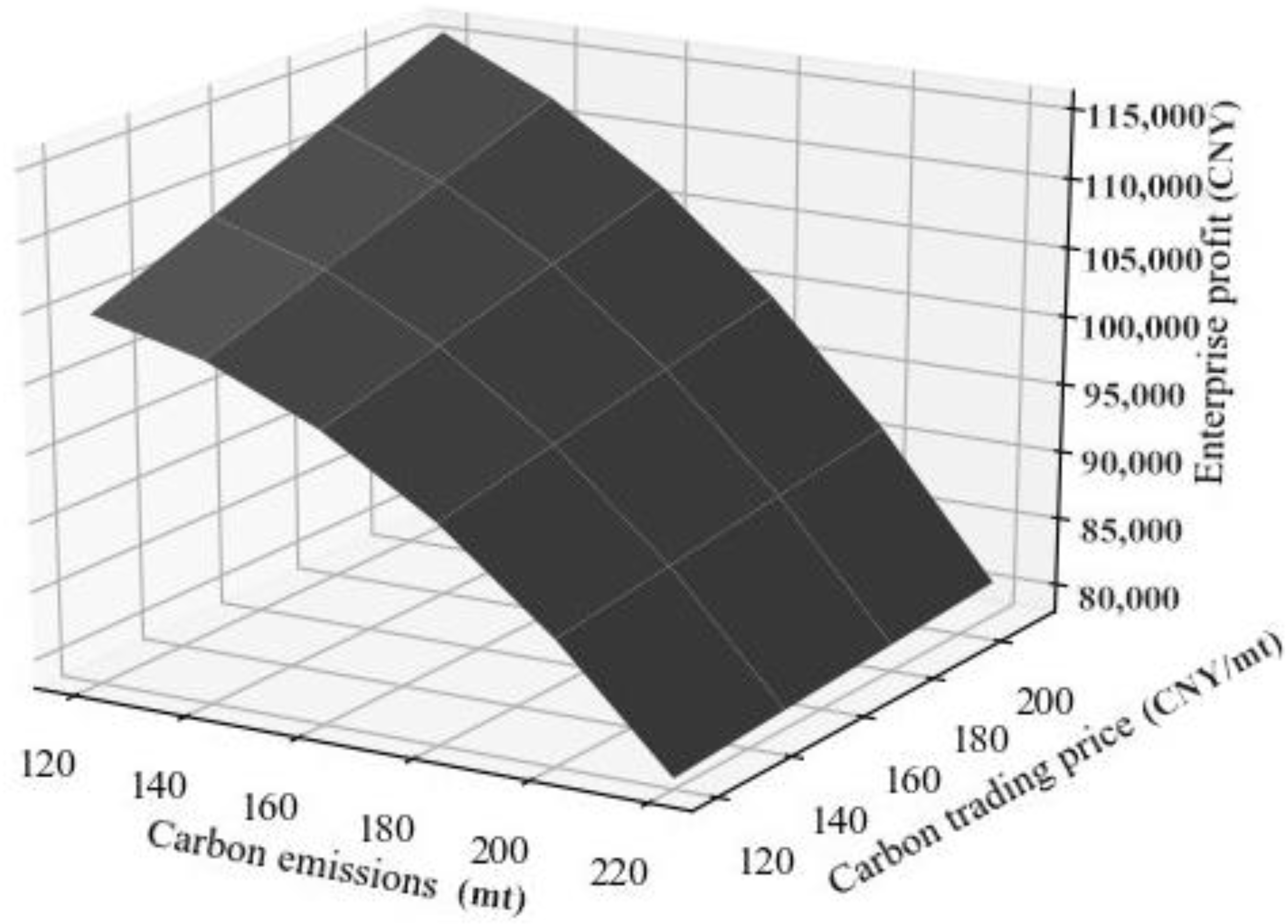
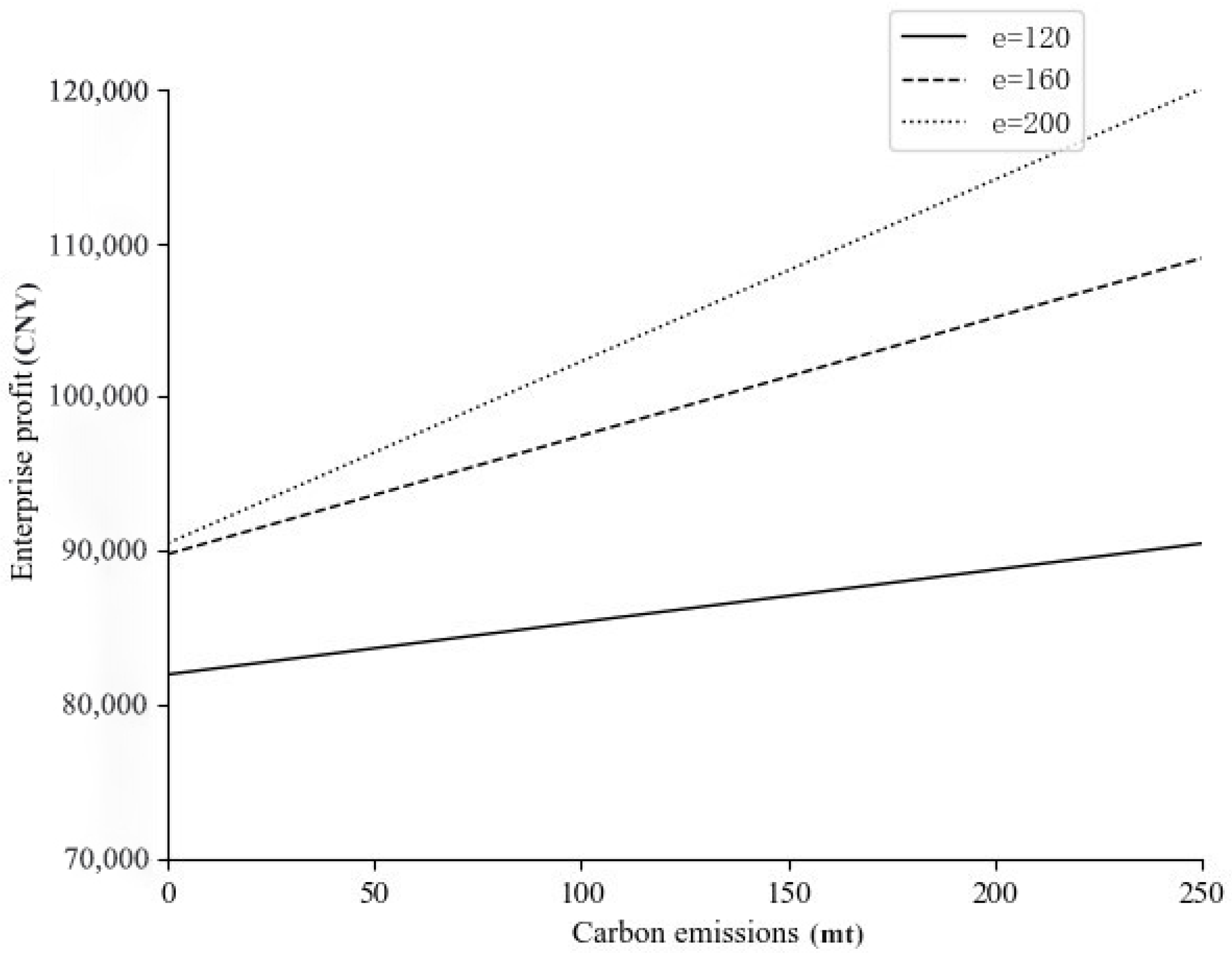
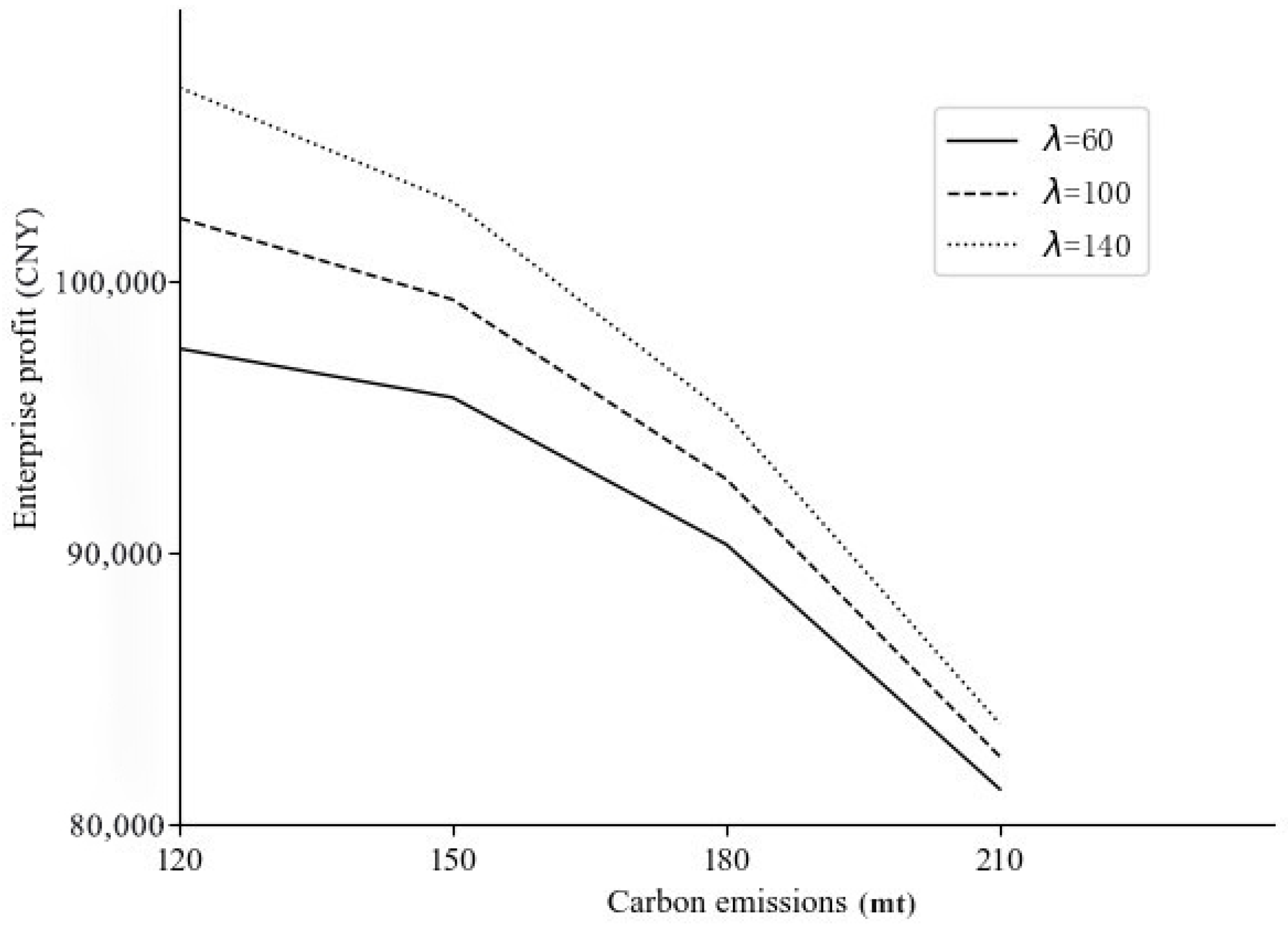
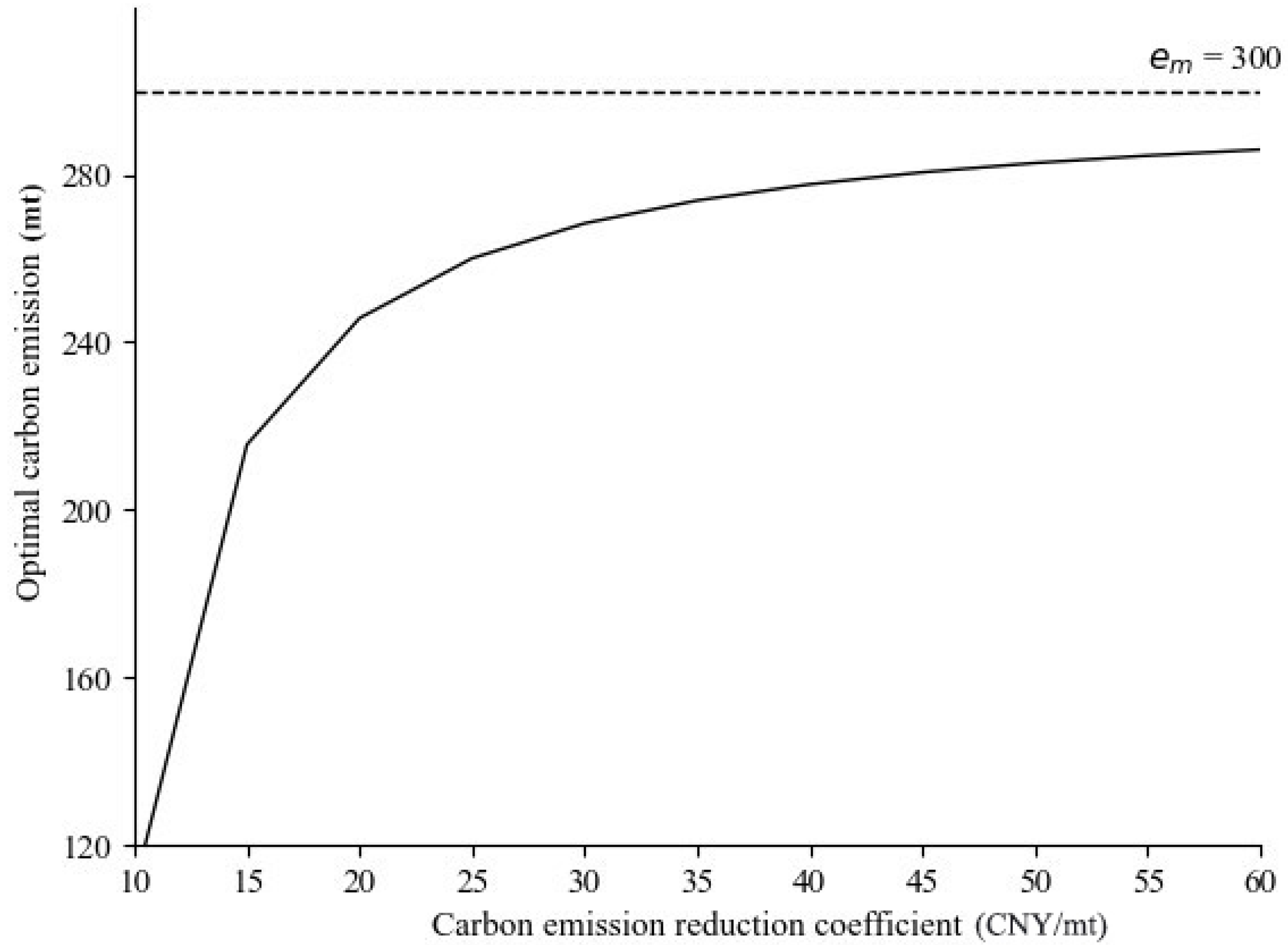
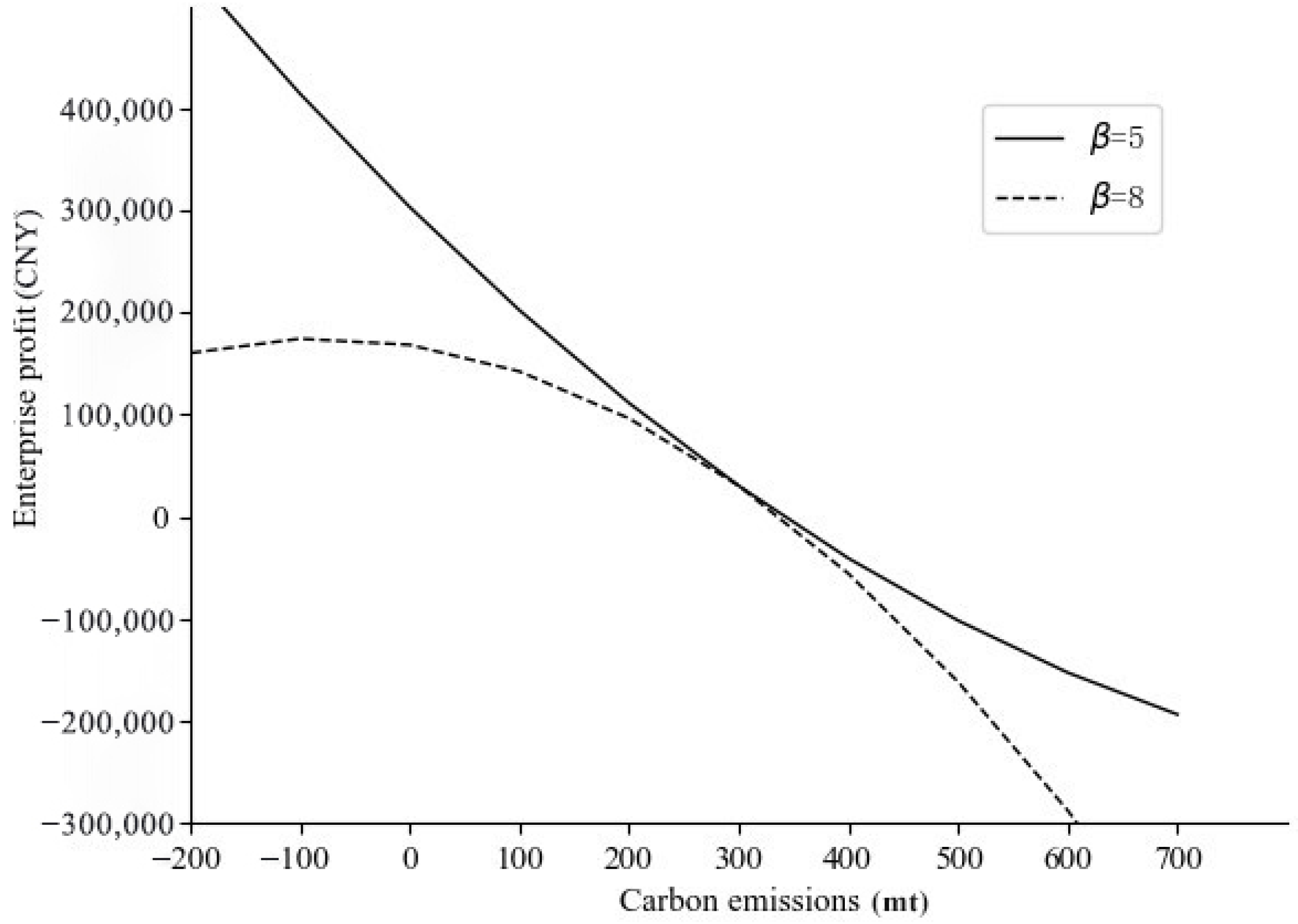
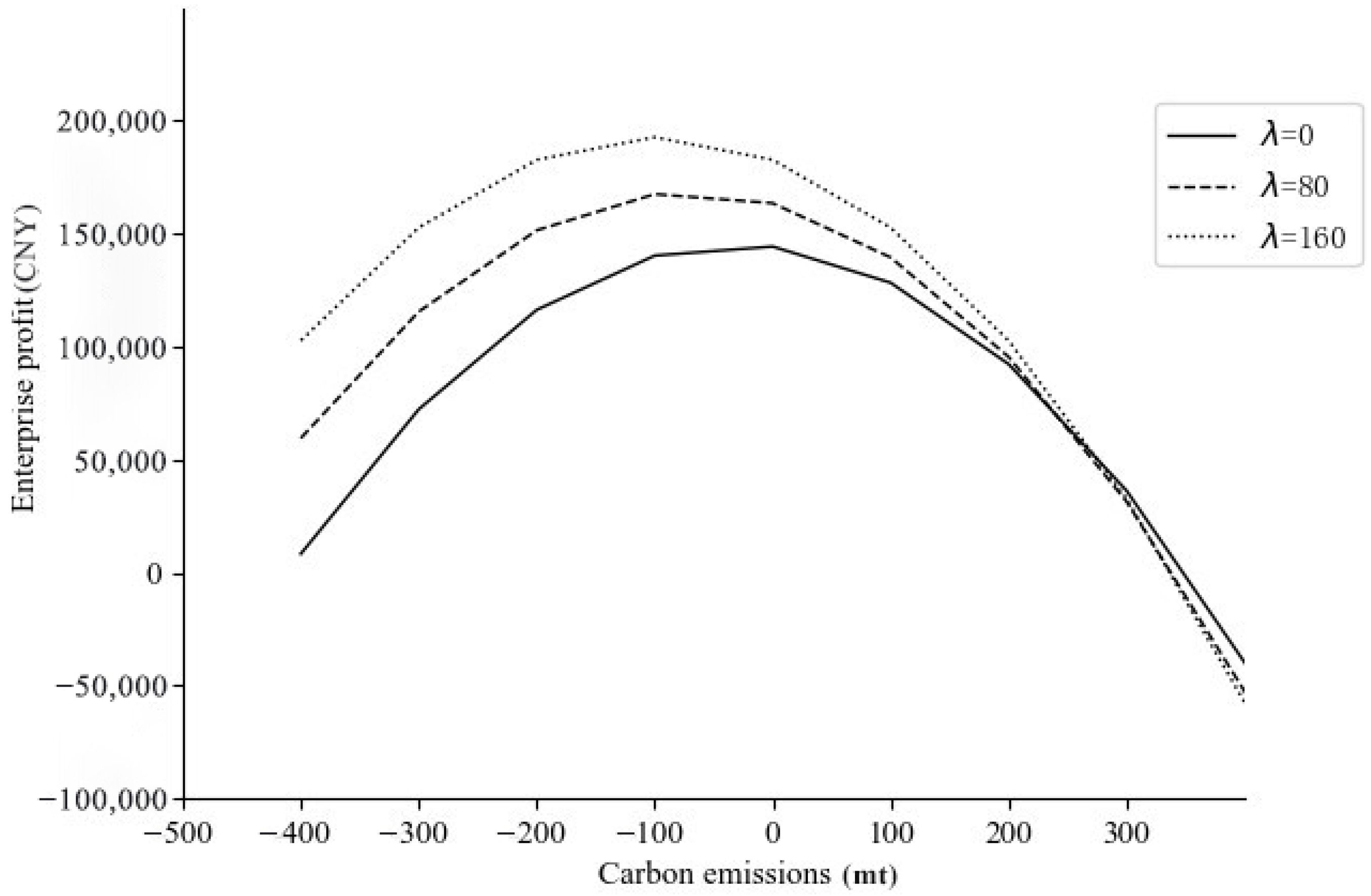
| Reference | Supply Chain Configuration (Stages) | Green Production | Green Consumption | Problems | Policy |
|---|---|---|---|---|---|
| Jharkharia S et al. (2019) [4] | Two | √ | × | Vehicle routing analyses problem | Carbon cap-and-trade policy |
| Li et al. (2020) [5] | Two | √ | × | Production decisions | Government subsidy |
| Shu et al. (2017) [7] | Single | √ | × | Impact of low carbon policy | Government subsidy; Carbon tax |
| Ding et al. (2016) [10] | Two | √ | × | Cooperation mechanism | Carbon caps |
| Yin et al. (2021) [11] | Three | √ | × | Production decisions | Carbon cap-and-trade policy |
| Kang et al. (2019) [12] | Two | √ | × | Production decisions | Carbon cap-and-trade policy |
| Wang et al. (2022) [13] | \ | √ | × | Impact of low carbon policy | Carbon cap-and-trade policy |
| Ren et al. (2022) [14] | Two | √ | √ | Impact of low carbon policy | Carbon tax |
| Liu et al. (2021) [19] | Two | √ | × | Production decisions | Carbon tax |
| Liu et al. (2022) [21] | Two | √ | × | Production decisions | Government regulation policy |
| Yi et al. (2018) [22] | Two | √ | × | Production decisions | Carbon taxes; Energy-saving subsidies |
| Chen et al. (2020) [24] | Two | √ | × | Production decisions | Carbon cap-and-trade policy |
| Sarkar, B et al. (2022) [26] | Three | √ | × | Supply chain management | \ |
| Mishra, M et al. (2022) [27] | Two | √ | × | Supply chain management | \ |
| Sun et al. (2020) [28] | Two | √ | √ | Production decisions | Carbon emission transfer strategies |
| This paper | Two | √ | √ | Production decisions | Consumption subsidy; Carbon cap-and-trade policy |
| Symbols | Descriptions | Symbols | Descriptions |
|---|---|---|---|
| The unit price of low-carbon products | Government carbon emission limits | ||
| Production cost per unit product | Government supervision factor | ||
| Product requirements | Carbon trading price | ||
| Carbon emission reduction with emission reduction input | Carbon emission without emission reduction input | ||
| The unit price of similar non low carbon products | Carbon emission at the time of maximum carbon emission reduction input | ||
| Consumer low carbon preference | The impact coefficient of carbon emission reduction on carbon emission reduction input | ||
| Total market capacity of all products | Government subsidy coefficient |
| 30 CNY/pcs | 10 CNY | 600 pieces | 240 mts | 1 | 300 mts | 120 mts | 10 pcs/mt | 0 | 0.2 | 0.2 | 50 CNY/mt | 10 CNY/mt |
Disclaimer/Publisher’s Note: The statements, opinions and data contained in all publications are solely those of the individual author(s) and contributor(s) and not of MDPI and/or the editor(s). MDPI and/or the editor(s) disclaim responsibility for any injury to people or property resulting from any ideas, methods, instructions or products referred to in the content. |
© 2023 by the authors. Licensee MDPI, Basel, Switzerland. This article is an open access article distributed under the terms and conditions of the Creative Commons Attribution (CC BY) license (https://creativecommons.org/licenses/by/4.0/).
Share and Cite
Liu, Z.; Sun, W.; Hu, B.; Han, C.; Ieromonachou, P.; Zhao, Y.; Zheng, J. Research on Supply Chain Optimization Considering Consumer Subsidy Mechanism in the Context of Carbon Neutrality. Energies 2023, 16, 3147. https://doi.org/10.3390/en16073147
Liu Z, Sun W, Hu B, Han C, Ieromonachou P, Zhao Y, Zheng J. Research on Supply Chain Optimization Considering Consumer Subsidy Mechanism in the Context of Carbon Neutrality. Energies. 2023; 16(7):3147. https://doi.org/10.3390/en16073147
Chicago/Turabian StyleLiu, Zheng, Wenzhuo Sun, Bin Hu, Chunjia Han, Petros Ieromonachou, Yuanjun Zhao, and Jiazhuo Zheng. 2023. "Research on Supply Chain Optimization Considering Consumer Subsidy Mechanism in the Context of Carbon Neutrality" Energies 16, no. 7: 3147. https://doi.org/10.3390/en16073147
APA StyleLiu, Z., Sun, W., Hu, B., Han, C., Ieromonachou, P., Zhao, Y., & Zheng, J. (2023). Research on Supply Chain Optimization Considering Consumer Subsidy Mechanism in the Context of Carbon Neutrality. Energies, 16(7), 3147. https://doi.org/10.3390/en16073147






